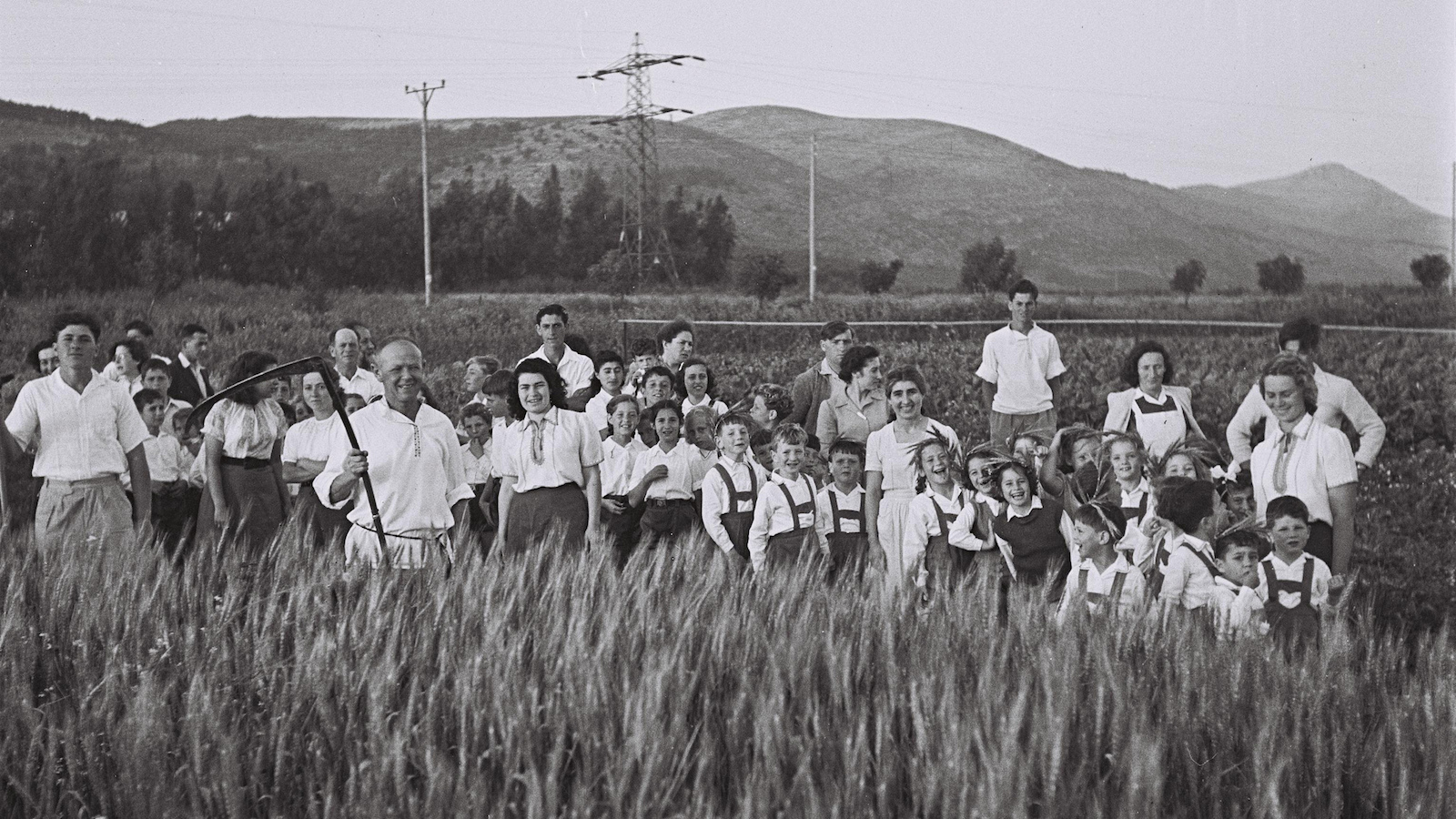The Omer is a period of 49 days between the Jewish holidays of Passover and Shavuot. It is a mitzvah to ritually count each day, a practice known in Hebrew as sefirat ha’omer. The Omer is also a period of semi-mourning and many refrain from getting married or cutting their hair during this time.
Origin
In ancient times, the Omer marked the beginning of the barley harvest, and its conclusion coincided with the ripening of wheat. On both occasions, special grain offerings were brought in the ancient Temple — on Passover a barley offering, and on Shavuot loaves of bread from choice flour. The word omer literally refers to an ancient dry measure of grain.
The Mishnah (Menachot chapter 10) describes the Omer sacrifice made at the beginning of the 49-day count. After the sun set, three sheaves of barley were identified and harvested with great fanfare as crowds watched. These were placed in a basket and carried to the Temple where the barley was processed: The kernels were removed from the stalks and singed with a flame, then milled into a coarse flour and sifted 13 times before being mixed with oil and frankincense to make a dough. This dough was held aloft and waved, then a portion of it burned up on the altar and the rest was eaten by the priests. According to the Talmud, this waving ritual was meant to prevent harmful winds from damaging the season’s grain crops (Menachot 62b).
Spiritual Significance
Beyond its agricultural significance, the Omer ritual serves as a daily reminder of the journey from liberation to revelation, mirroring the Israelites’ passage from slavery in Egypt to the receiving of the Torah at Mount Sinai, which is celebrated on Shavuot. Some frame this as a journey from physical redemption to spiritual redemption.
With your help, My Jewish Learning can provide endless opportunities for learning, connection and discovery.
Today, the Omer is a time of semi-mourning during which it is customary to avoid getting a haircut, celebrating a marriage, or listening to music. Various explanations have been offered for this practice, which seems to have emerged in medieval times. Perhaps the best-known is that, according to the Talmud (Yevamot 62b), the span between Passover and Shavuot was the period in which 24,000 students of the great sage Rabbi Akiva died because they did not treat each other with respect. In the medieval and modern periods, when violence against Jews increased around Easter and Passover, this practice of mourning was reinforced and the period became associated with remembering Jews who died in the Crusades, at the hands of the Cossacks and in ghetto uprisings against the Nazis.
Within Jewish mysticism, each week of the Omer corresponds to one of the seven lower sefirot, or divine emanations. Similarly, each day of the Omer also corresponds to one of the seven lower sefirot. This means each day represents a unique pair of divine emanations and its own spiritual significance and possibilities for character development.
Lag Ba’omer
The 33rd day of the Omer is called Lag Ba’omer. Mourning is paused on this day, according to traditional sources, because it was on this day that Rabbi Akiva’s students stopped dying. Many Jews take the opportunity of Lag Ba’omer to wed and cut their hair. In fact, this is a day on which some Jewish children traditionally receive their first haircut. Other traditions include bonfires and playing with bows and arrows.
In modern times, Yom Ha’atzmaut, Israel’s Independence Day, falls on the 5th of Iyyar within the Omer. For Jews who consider Yom Ha’atzmaut a religious holiday, the mourning restrictions are lifted on this day.
How to Count the Omer
The Omer is traditionally counted at night, shortly after sundown (when the Jewish day begins). It is traditional to count the Omer right after reciting ma’ariv, the evening prayer service (Shulchan Aruch, Orach Chayim 489:1). The first day is counted at the second Passover seder.
To count the Omer, first recite this blessing:
Barukh ata Adonai Eloheinu Melekh ha’Olam asher kid’shanu b’mitzvotav v’tizivanu al sefirat ha’omer.
Blessed are you, Lord our God, Ruler of the Universe, who has sanctified us with your commandments and commanded us to count the omer.
After the blessing is recited, the number of the day is announced in terms of weeks and additional days. For example:
Hayom sh’losha asar yom, she’hem shavuah echad v’shisha yamim la’omer (some say: ba’omer).
Today is 13 days, which is one week and six days of the omer.
Many Jews have Omer calendars that provide a visual representation of the count. This can look like anything from a traditional wall calendar to a string of colored beads. Over the centuries, communities have developed many creative and artistic variations.
For more guidance on counting the Omer, click here.
Shavuot
Pronounced: shah-voo-OTE (oo as in boot), also shah-VOO-us, Origin: Hebrew, the holiday celebrating the giving of the Torah at Mount Sinai, falls in the Hebrew month Sivan, which usually coincides with May or June.
Torah
Pronunced: TORE-uh, Origin: Hebrew, the Five Books of Moses.



